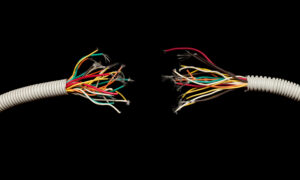The International Association for the Study of Pain (IASP) is highly regarded international society committed to research and education about pain. It was founded by one of the most prominent pioneers in pain, Dr. John Bonica.
Conceptualizing pain
What is pain? We toss the word around a lot without really understanding what it actually means. A loud noise is uncomfortable. Bitter tastes are unpleasant. Ringing in your ears is more than annoying. What about when someone, “hurts your feelings?”
The way every living species of creatures evolved and survives is by processing multiple types of sensory input and interpreting the sum total of it as safe or dangerous. Then its behavior is directed towards safety and rewards while also avoiding threat. These automatic actions in response to this input keeps us in a neutral zone most of the time so we remain functional and comfortable.

Nociceptive pain
The name for this function of the nervous system is called, “the nociceptive system.” When the limits of safety are exceeded for a given part of the body, your receptors will signal danger and cause you to engage in corrective action. The intensity of the signal will depend on the input from a specific part of the body. For example, a bright spotlight shined in your eye would not be tolerated for very long. Your brain knows your eyes would be damaged quickly and the danger signal is sent out for you to close your eyes or move away from the light. But what if the same light was focused on the bottom of your foot? No problem because there is no threat from light alone to that part of your body. Pain is simply a warning signal that there is potential damage to a specific body part.
So, acute pain is necessary and protective. It is a gift and people who are born without a pain system don’t survive more than 10-15 years. They can’t sense danger. Tissues are destroyed and they die of infection. (1)
A nightmare
But there is nothing useful about chronic pain. A delicately balanced signaling system is out of kilter and it can no longer accurately interpret the environment. You are trapped by incredibly unpleasant sensations without any hope of escape. It may be one of the worst experiences of the human condition.

Based on the last 10 years of neuroscience research, new definitions of chronic pain are being created. Here is one proposed by the IASP.
IASP definitions of chronic pain
For the first time since 1979, the International Association for the Study of Pain (IASP) revised its definition of pain. This was made necessary by the research showing clearly that pain could arise from sources other than physical tissue damage. Although the revision is a relatively small one, it has big implications for appreciating the complexity of pain and expanding our ability to assess and manage pain with multi-disciplinary approaches.
Old 1979 definition of chronic pain
“An unpleasant sensory and emotional experience associated with actual or potential tissue damage or described in terms of such damage.”
“An unpleasant sensory and emotional experience associated with or resembling that associated with actual or potential tissue damage.”
This definition is expanded by 6 key points
- Pain is always a personal experience that is influenced to varying degrees by biological, psychological, and social factors
- Pain and nociception are different phenomena. Pain cannot be inferred solely from activity in sensory neurons.
- Through their life experiences, individuals learn the concept of pain.
- A person’s report of an experience as pain should be respected.
- Although pain usually serves an adaptive role, it may have adverse effects on function and social and psychological well-being.
- Verbal description is only one of several behaviors to express pain; inability to communicate does not negate the possibility that a human or a nonhuman animal experiences pain.
By adding the words resembling that associated with allows for an expanded understanding and appreciation of pain beyond that which was previously limited to actual tissue damage.
Dropping the phrase “describe” the pain, allows for acceptance of pain from those who may not have the ability to describe their pain whether infants, cognitively impaired individuals, those with communicative disorders, or any other reason that a description of pain may not be possible including nonhuman animals.
Commentary on the six key points
- It logically has to be personal since each person is genetically different and we are programmed with regards to safety vs threat by our past. If you come from a less than nurturing background, more things in the present will seem dangerous because when you were younger they were dangerous. You will spend a higher percent of your time in a “high alert” and the sustained exposure to stress hormones and inflammation will create physical symptoms and serious diseases.
- Acute pain is the danger signal that indicates that you have exceeded the safety limit of a given structure of your body. The nociceptive system keeps your behaviors in a range to protect you. Chronic pain happens when the signals have become disconnected from the environment and keep firing even in the presence of safety.
- Pain being a learned experience is well established in the medical literature. One classic study involved looking at childhood trauma. A scoring system was developed called the ACE score (adverse childhood experiences) looking at 10 factors such as various kinds of abuse, parent(s) in prison, addicted to drugs, or having a mental health diagnosis. There is a marked increase in chronic diseases including chronic pain. (2)
- Patients in chronic pain are often labeled. They include, “drug addict”, low pain threshold”, “faker”, “drug seeker”, “unmotivated”, and the list is endless. Often the labels are even more disparaging. No one likes being labeled. Once a person has been labeled, you can no longer “see them”. Since physical symptoms are created by the patient’s interaction with his or her environment, it is critical to know them and also their life circumstances. How can you solve any problem without deeply understanding it?
- There is no usefulness in chronic pain. It is a disaster and it always interferes with function, social interactions, and psychological well-being – ALWAYS.
- Chronic pain is so disruptive to every aspect of your life that words do not come close to describing the depth of suffering. It has been shown that the impact of chronic pain is greater than that of having terminal cancer. (3) The term that best reflects this condition is, “The Abyss.” It is a really dark place without a way out.
Unfortunately, mainstream medicine has not incorporated the last 20 years of neuroscience research into their treatment approach. It continues to recommend random simplistic treatments for a complex problem. It can’t and doesn’t work.
The new IASP definition is a start and opens the door for a better treatment paradigm. Chronic pain is solvable with an understanding of it and the principles behind the solutions. The starting point is for YOU to better understand it and then solve it with using the medical system as a resource. Once you take charge, it is game on.

- Yancey, P and Paul Brand. Pain: The Gift Nobody Wants. DIANE Publishing Company (1999).
- Anda RF, et al. “The enduring effects of abuse and related adverse experiences in childhood. A convergence of evidence from neurobiology and epidemiology.” European Archives of Psychiatry and Clinical Neuroscience (2006); 256: 174–186.
- Fredheim OM, Kaasa S, Fayers P, Saltnes T, Jordhøy M, Bortchgrevink PC. Chronic non-malignant pain patients report as poor health-related quality of life as palliative cancer patients. Acta Anaesthesiol Scand. 2008;52(1):143-148.
